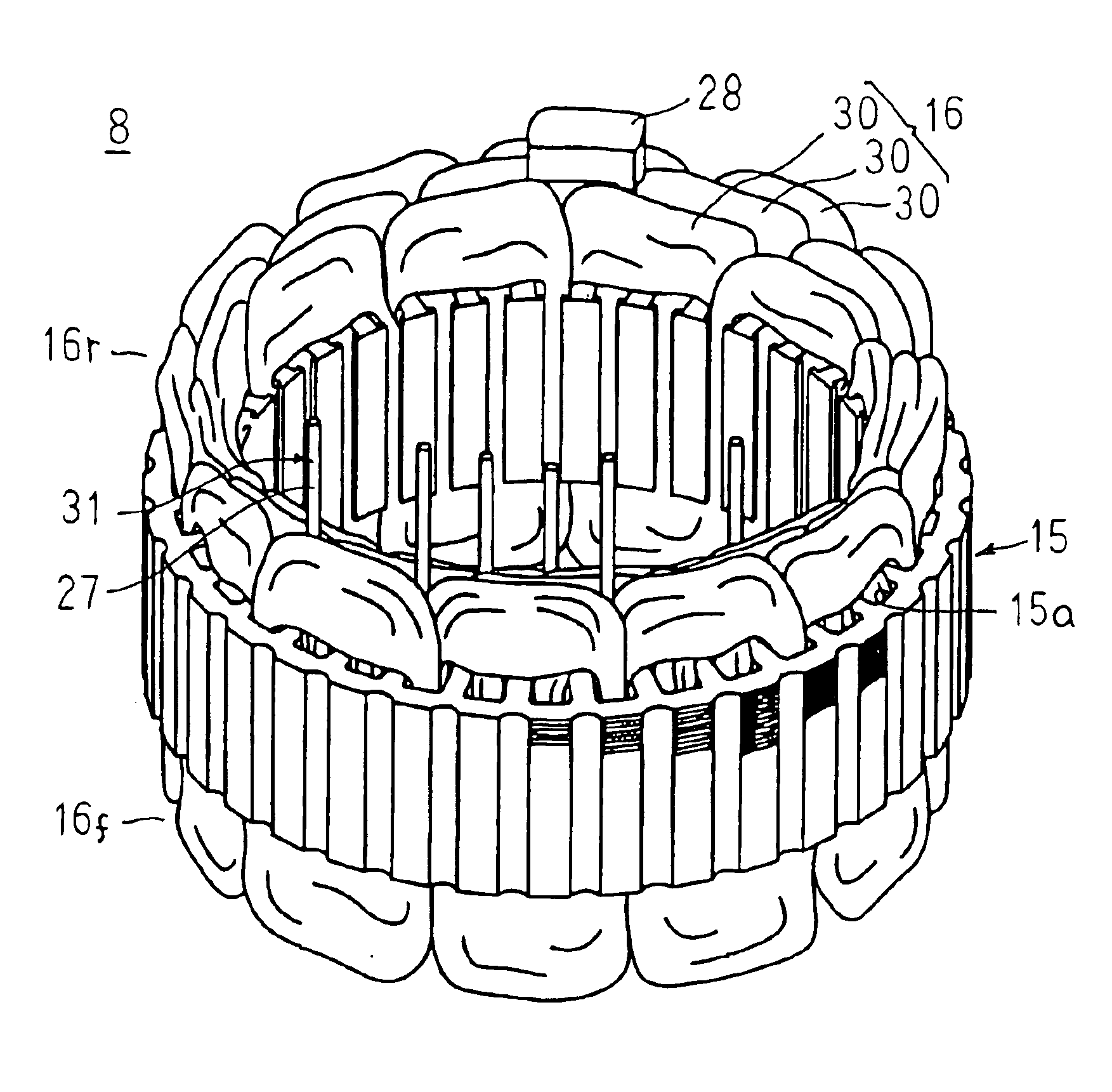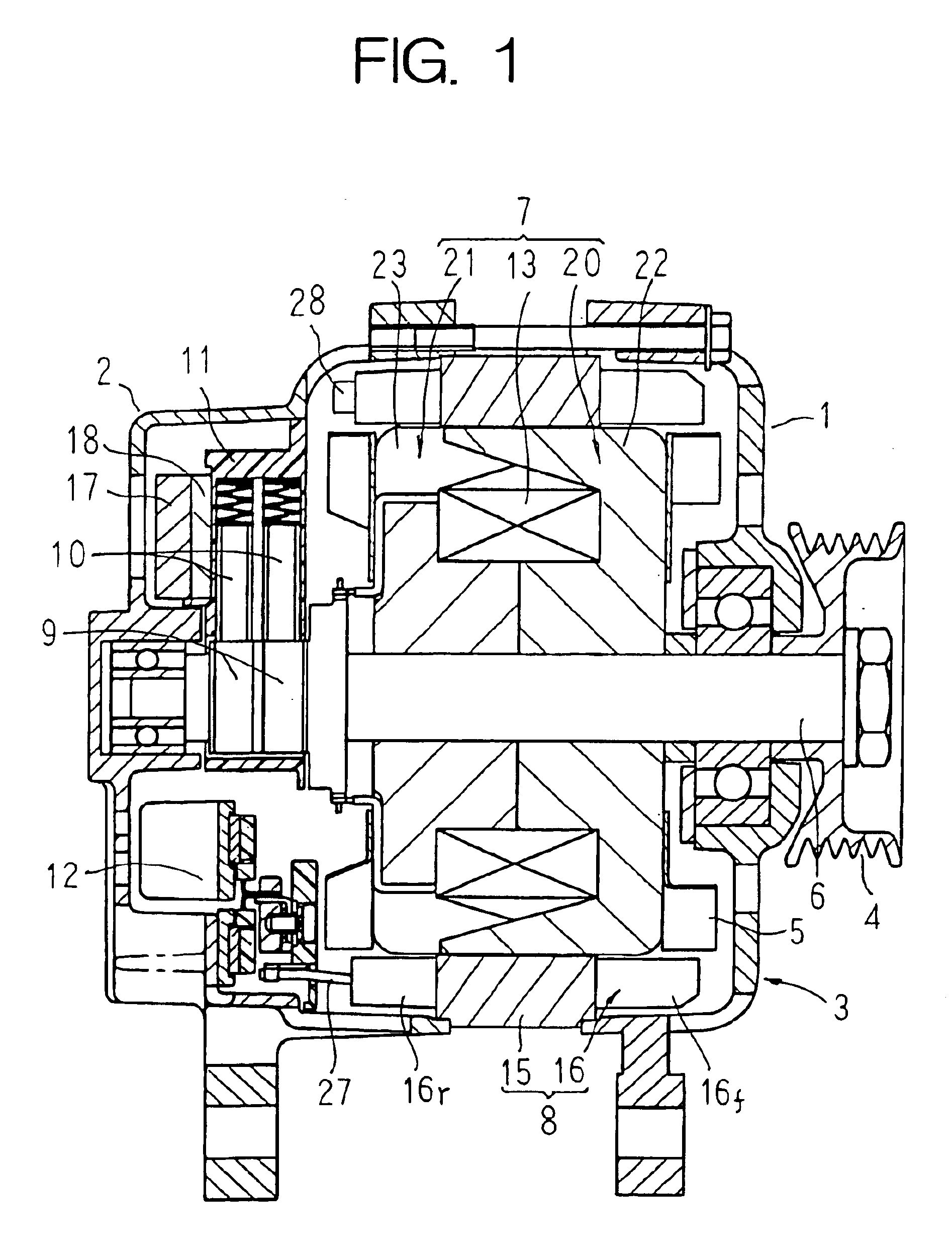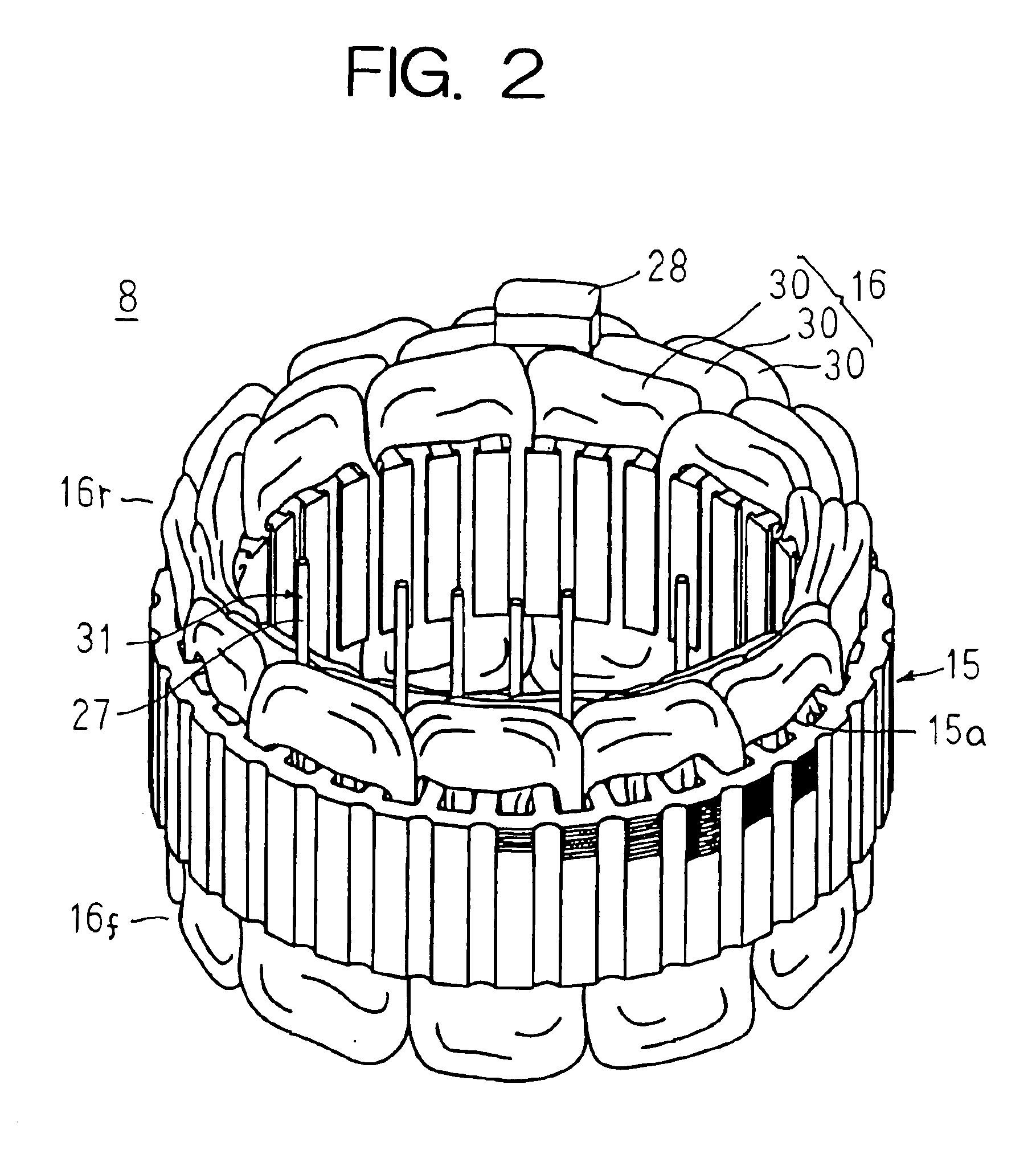Stator for a dynamoelectric machine
- Summary
- Abstract
- Description
- Claims
- Application Information
AI Technical Summary
Benefits of technology
Problems solved by technology
Method used
Image
Examples
embodiment 1
[0029]FIG. 1 is a longitudinal section showing an automotive alternator according to Embodiment 1 of the present invention, FIG. 2 is a perspective of a stator of the automotive alternator according to Embodiment 1 of the present invention viewed from a rear end, FIGS. 3A to 3C are process diagrams explaining a method for manufacturing a stator winding used in the stator of the automotive alternator according to Embodiment 1 of the present invention, and FIG. 4 is a perspective schematically showing a winding phase portion constituting the stator winding used in the stator of the automotive alternator according to Embodiment 1 of the present invention.
[0030]In FIGS. 1 and 2, an automotive alternator is provided with: a case 3 constituted by a front bracket 1 and a rear bracket 2 made of aluminum; a shaft 6 disposed inside the case 3, a pulley 4 secured to a first end portion of the shaft 6; a Lundell-type rotor 7 secured to the shaft 6; fans 5 secured to first and second axial end p...
embodiment 2
[0048]FIG. 5 is a perspective schematically showing a stator of an automotive alternator according to Embodiment 2 of the present invention, and FIG. 6 is a cross section taken along line VI—VI in FIG. 5 viewed from the direction of the arrows.
[0049]In FIGS. 5 and 6, a second mass adjusting portion 29 is mounted to an apex portion of the front-end coil end group16f to adjust an imbalance in mass between the front end and the rear end of the stator core 15 relative to a plane 26 perpendicular to the central axis 25 at an axial center of the central axis 25 (an axial mass imbalance).
[0050]Moreover, Embodiment 2 is constructed in a similar manner to Embodiment 1 above except for the fact that the second mass adjusting portion 29 is provided.
[0051]In this stator 8A, because the height Hf of the front-end coil end group 16f and the height Hr of the rear-end coil end group 16r are equal, the mass at the front end and the rear end of the stator 8A would be balanced relative to the plane 26...
embodiment 3
[0054]FIG. 7 is a perspective schematically showing a stator of an automotive alternator according to Embodiment 3 of the present invention, and FIG. 8 is a cross section taken along line VIII—VIII in FIG. 7 viewed from the direction of the arrows.
[0055]In FIGS. 7 and 8, a second mass adjusting portion 29 is mounted to an apex portion of the front-end coil end group 16f to adjust an imbalance in mass between the front end and the rear end of the stator core 15 relative to a plane 26 perpendicular to the central axis 25 at an axial center of the central axis 25 (an axial mass imbalance).
[0056]In this stator 8B, because the height Hr of the rear-end coil end group 16r is higher than the height Hf of the front-end coil end group 16f, the mass at the rear end of the stator 8B would be greater than the mass at the front end relative to the plane 26 even if there were no lead wires 27 and no first mass adjusting portion 28.
[0057]In Embodiment 3, a second mass adjusting portion 29 is mount...
PUM
 Login to View More
Login to View More Abstract
Description
Claims
Application Information
 Login to View More
Login to View More - R&D
- Intellectual Property
- Life Sciences
- Materials
- Tech Scout
- Unparalleled Data Quality
- Higher Quality Content
- 60% Fewer Hallucinations
Browse by: Latest US Patents, China's latest patents, Technical Efficacy Thesaurus, Application Domain, Technology Topic, Popular Technical Reports.
© 2025 PatSnap. All rights reserved.Legal|Privacy policy|Modern Slavery Act Transparency Statement|Sitemap|About US| Contact US: help@patsnap.com



